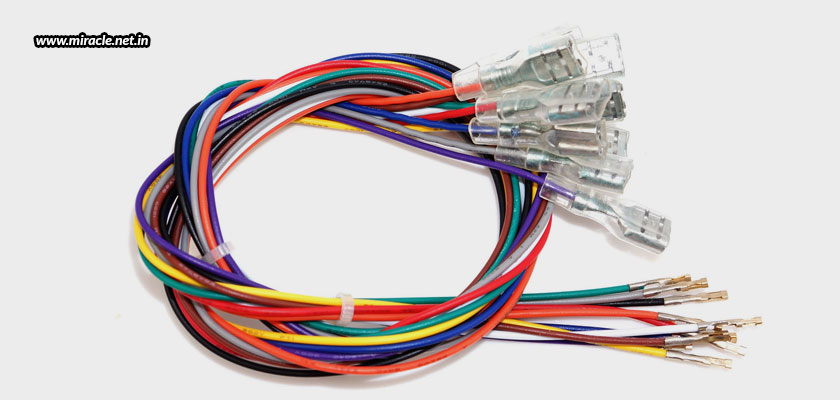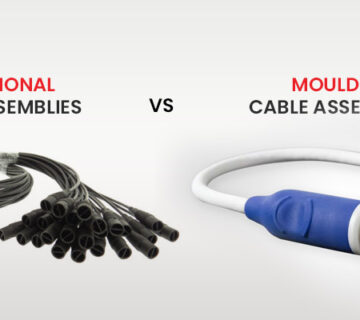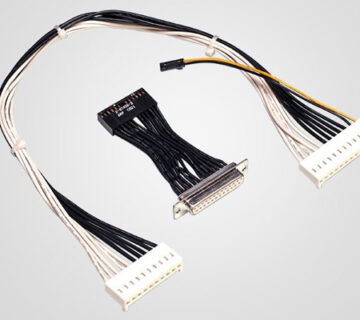People prefer everything to be customized as per their preferences today, so much so that professional companies want to customize their wires that need to be installed into their applications. If you are one such company looking to order a customized wire or wire harness, you should get in touch with professional wire harness manufacturers from India, one like Miracle Electronics, who have enough experience of manufacturing all kinds of simple and complicated wire harnesses for different industrial sectors. And, when you do so, you should also be sure on your part, about what all you want to include in your product. There are various components that are teamed up to make a wire harness; and you must be sure about the choice of each one of these. And, in order to make the right choice, you must first understand all the environmental conditions and other factors that your wire harness or application will be subject to. Will the environment be highly humid or extremely hot? Will the product have to bear excessive pressure or abrasion? After you understand the requirements completely, you will be in a better position to make the right choice. Here is a complete list of all the components that you need to consider while planning up a customized wire harness; and each one comes with a list of the various options available.
Conductor
Conductor is the very important material in a wire harness that allows the flow of an electrical current in one or more directions within the wire. The most common material used is copper, but there are many other options like nickel, silver, tin, and aluminum too.
- Copper has low thermal expansion and high conductivity, available at a very reasonable price.
- Nickel is very reliable in every kind of condition like low temperature, high temperature, high humidity, and acidic.
- Silver is very conductive, and very expensive too.
- Tin is easily solderable, but has moderate conducting ability
- Aluminum is very light in weight and cheap, but it is the least conductive.
Stranding
Just as much as choosing the wire material is important, equally important is choosing the type in which the wires need to be stranded.
- Bunching – The strands are twisted together with no arrangement.
- Concentric stranding – A central wire is surrounded by a layer of wires, which is hen surrounded by another layer of wires, twisting in the opposite direction.
- Unilay stranding – The strands are arranged in a circular pattern, with different layers twisted in the same direction.
- Rope lay stranding – A concentric arrangement, with groups of wires laid one over the other to form a rope type figure.
Insulation and jacketing
Insulation is a covering that protects the conductor against any kind of current leakage. Also, any incoming physical abuse can be prevented with the help of insulation. Over the insulation comes another protective layer of jacketing, which is designed to protect the wires against chemicals, moisture, and mechanical damage. The most popular insulating and jacketing materials used include –
- PVC – The material can perform effectively at temperatures between -20 to 105°C, and has good fire resistance, chemical resistance, UV resistance, durability, and flexibility.
- Polyethylene and polyurethane – Both these materials can perform effectively at temperatures between -60 and 80°C, and have good chemical resistance, UV resistance, durability, and flexibility; but are very poorly resistant to fire.
- Thermoplastic rubber or elastomer – The material can perform effectively at temperatures between -40 and 90 °C, and is surprisingly good in terms of fire resistance, chemical resistance, UV resistance, durability, and flexibility.
Shielding
If your wires are being used for telecommunication applications, or when they have to be used in close proximity to a large number of additional cables, you need to keep them protected against electromagnetic interference; and this is why you will need to consider offering an additional layer of shielding.
- Braid shielding offers moderate flexibility with the material being interwoven into a tubular structure or rectangular cross-section. It is the strongest and most reliable type of shielding. Materials like steel, aluminum, and copper are used.
- Spiral shielding offers highest flexibility with lowest weight. Steel is most popularly used.
- Foil shielding looks like a foil gum wrapper, and is constructed with tape being either Mylar or aluminum. This type of shielding offers comparatively better resistance to electromagnetic interference and noise.
Fillers
Fillers may be used to strengthen the cable by supporting the outer layers, and increasing the flexibility of the construction, while also offering a rounder and smoother construction. The most popularly used fillers include –
- Polyethylene, which is a lightweight material that can be easily moulded, making it ideal for longer wires.
- Cotton, which is a low cost solution as the durability is comparatively lesser, but the flexibility offered is good.
- Steel, which is highly strong and durable, and can be tied off at either end of a harness, to transfer any force the wire encounters, away from the conductors, and onto a housing inside the harness.
- Foam, which can be made out of a variety of materials, effective for filling in small spaces between wires, and retaining the wire harness shape.
Using the above knowledge, you can make the right choices for your particular wire harness, depending upon the various requirements you need to fulfill. So, make your decisions, and get in touch with one of the best wire harness manufacturers from India to discuss, and have your harnesses made.




